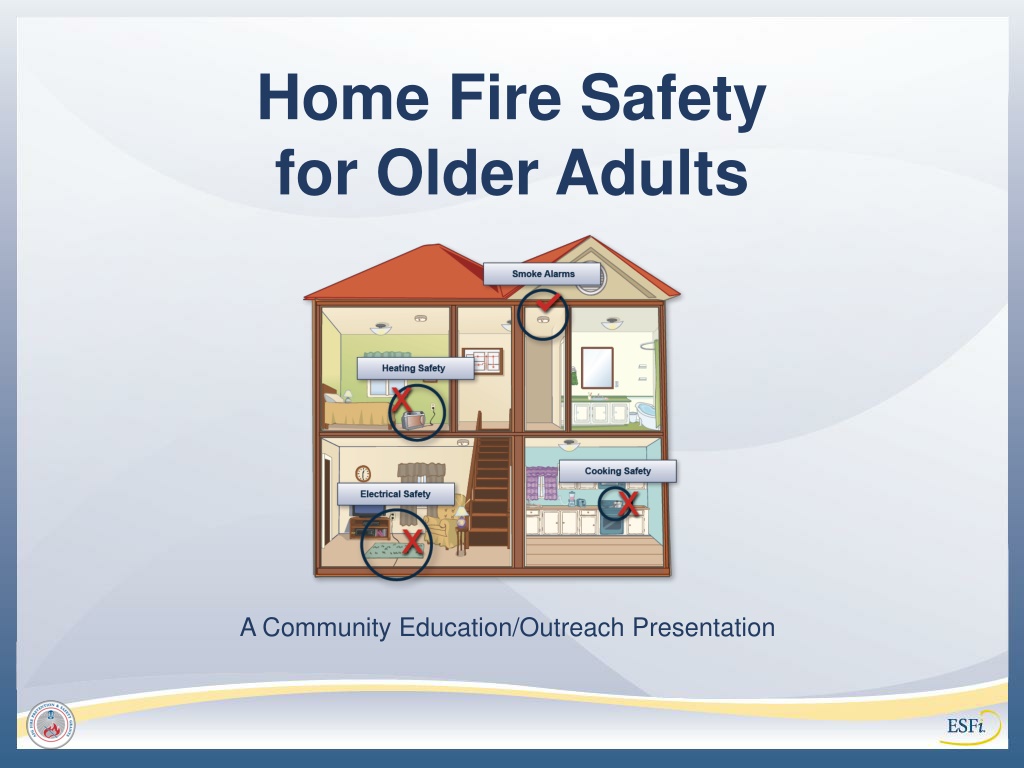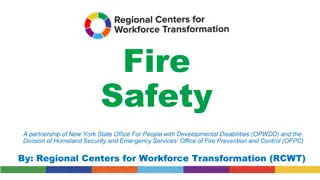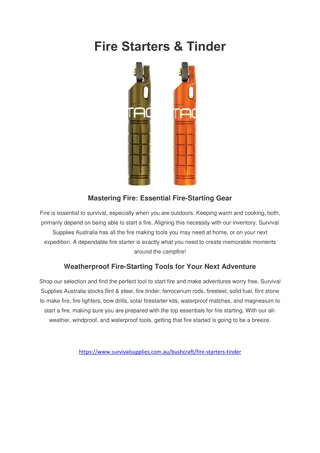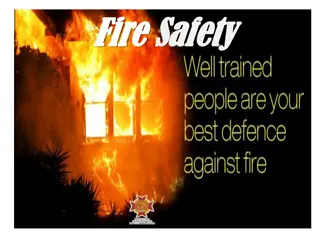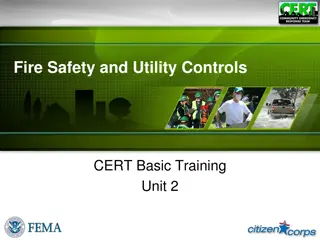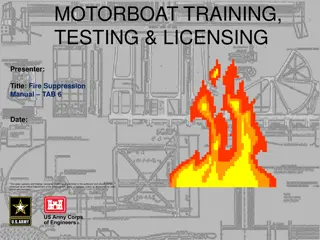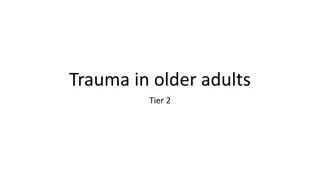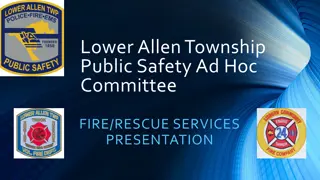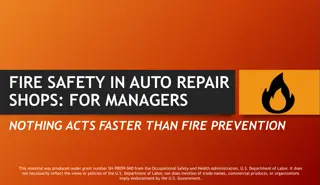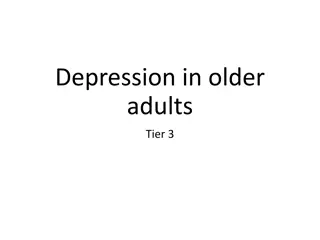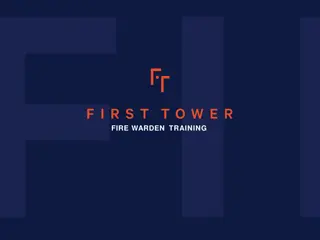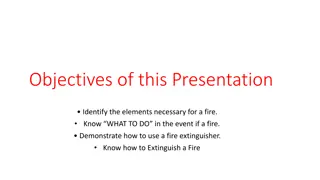Home Fire Safety for Older Adults - Community Education Presentation
The importance of fire safety for older adults is emphasized in this community education presentation. Statistics reveal the significant risks older adults face from home fires and the leading causes behind such incidents. Strategies to reduce these risks through prevention and preparation are discussed to promote a safer living environment for older adults.
Download Presentation

Please find below an Image/Link to download the presentation.
The content on the website is provided AS IS for your information and personal use only. It may not be sold, licensed, or shared on other websites without obtaining consent from the author. Download presentation by click this link. If you encounter any issues during the download, it is possible that the publisher has removed the file from their server.
E N D
Presentation Transcript
Home Fire Safety for Older Adults A Community Education/Outreach Presentation
Who is ESFI? The premier non-profit organization dedicated exclusively to promoting electrical safety through education, awareness and advocacy. Awarded a 2011 Fire Prevention and Safety (FP&S) Grant from DHS/FEMA to develop fire safety resources for specific at-risk populations, including older adults (ages 65+). ESFI.png
Why is Fire Safety Important? Fires happen every day and the toll they take on our lives is boundless Every 24 seconds a fire department responds to a fire Every 65 seconds, a fire occurs in a structure, and a residential fire strikes every 85 seconds A fire claims a civilian life every 2 hours and 49 minutes and results in a civilian injury every 30 minutes 62% of home fire deaths occur in homes with either no smoke alarms or no working smoke alarms.
Leading Causes of Home Fires Cooking: U.S. fire departments respond to an average of 155,400 cooking fires per year. Unattended cooking is the leading cause of cooking fires Heating Equipment: In 2010, heating equipment was the second leading cause of home fires and home fire deaths. Space heaters result in far more fires and losses than central heating devices. Electrical Equipment and Distribution System: In 2005-2009, electrical fires represented 13% of all home fires and 17% of associated fire deaths. In 2009 alone, 44,800 home fires involved some type of electrical failure or malfunction. These fires resulted in 472 deaths and 1,500 injuries.
How Does Fire Affect Older Adults? Adults over 65 have the highest risk of death from fire The risk of fire death for those 65+ is 2 timeshigher than the general population Risk increases with age adults age 85+ have a risk that is 3.7 times higher The risk of dying from cooking or heating fires is twice that of the general population for those 75+ People 75+ also have a higher risk of dying from electrical fires
Reducing the Risks for Older Adults Fire Prevention Strategies: Follow good fire safety practices Identify and correct home fire hazards Fire Preparation Strategies: Develop a fire escape plan and practice it Install and properly maintain smoke alarms
Cooking Fire Prevention Tips Stay in the kitchen when frying, grilling or broiling food. Turn off the stove if you leave the kitchen - even a short period of time. When simmering, baking, roasting or boiling, check food regularly. Use a timer to remind you that you re cooking. Turn handles of pots and pans to the side to avoid spills. Wear short, close-fitting or tightly rolled sleeves when cooking. Keep the stovetop and oven clean. Keep towels, dish cloths, and other flammable items away from the stove and other hot surfaces. Unplug the toaster and other countertop appliances when not in use.
Heating Fire Prevention Tips Keep anything that can burn at least three feet away from heating equipment - like the furnace, space heater, fireplace or wood stove. Use products only for their intended purposes. Never use the oven to heat the home. Have your heating system inspected by a qualified service professional at least once per year. Install and maintain carbon monoxide (CO) alarms to avoid the risk of CO poisoning. Place space heaters on level, flat surfaces, but never on furniture. Keep space heaters out of high traffic areas and doorways. Turn space heaters off when you leave the room or go to sleep.
Electrical Fire Prevention Tips Routinely check cords, outlets, switches, and appliances for signs of damage. Look and listen for warning signs of an electrical problem. Contact a licensed electrician if you observe: Frequent problems with blowing fuses or tripping circuit breakers; A tingling feeling or slight shock when you touch an appliance; Outlets and switches that are warm or make crackling, sizzling or buzzing noises; Flickering or dimming lights. Do not overload outlets. Use extension cords only temporarily. Never run electrical cords under rugs or carpets. Do not pinch cords under furniture or in windows/doors. Always use light bulbs that match the wattage indicated on the lamp.
Fire Escape Planning Tips Involve all family members in creating or updating the plan. Walk through the home and note any possible exits including windows. Draw a floor plan and mark two ways to escape from each room. Consider using a ground floor bedroom to make escape easier. Make sure all doors and windows can be opened easily. Keep doorways, hallways, and stairs are clear of obstacles. Use battery-powered lights to illuminate halls and exits or have flashlights ready. If possible, assign a family member/caregiver to assist older adults or persons with mobility issues. Practice the fire escape plan at least twice per year. Update the fire escape plan as necessary to accommodate new health or mobility concerns.
Smoke Alarm Safety Tips Smoke alarms should be installed in every bedroom, outside each sleeping area, and on every level of the home. Purchase alarms that have the label of a nationally-recognized testing laboratory. For the best protection, smoke alarms should be interconnected so that they all sound if one sounds. Test smoke alarms every month by pressing the TEST button. Replace batteries at least once a year or sooner if an alarm chirps or beeps to indicate low battery. Occasionally dust or lightly vacuum the exterior of the alarm to remove dust and cobwebs. Replace all smoke alarms at least every ten years.
Smoke Alarm Safety Tips Additional Considerations for Older Adults: Test smoke alarms to make sure everyone can hear them - even when they are asleep. Some older adults may not be awakened by the sound of the smoke alarm. Notification devices that produce complex low frequency audible signals can be used to awaken those with mild to severe hearing loss. Consider installing smoke alarms that use flashing light or vibration if diminished hearing is a concern. Smoke alarms with high intensity strobes can be used to wake the deaf or others who have profound hearing loss. Pillow or bed shakers are required to be used with strobes.
Additional Resources Visit www.electrical-safety.org for access to all of ESFI s free fire and electrical safety resources. Electrical Safety Foundation International (703) 841-3229 info@esfi.org
